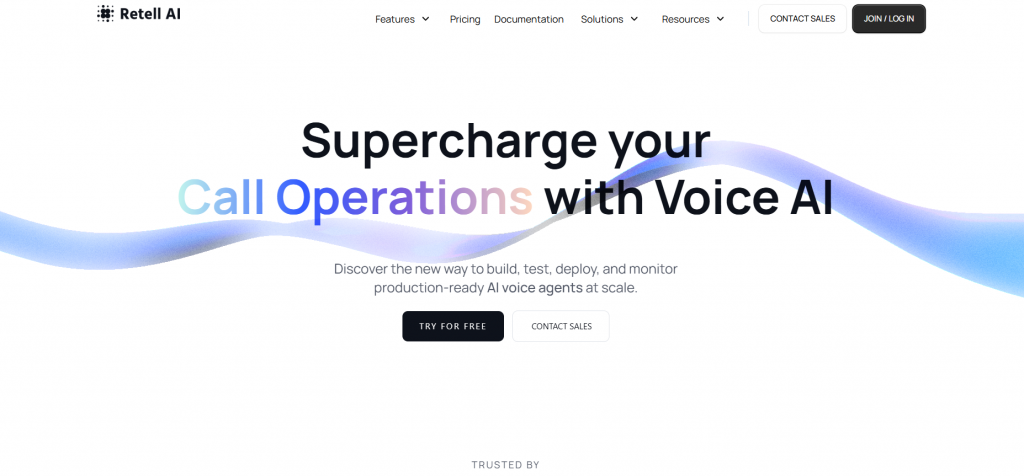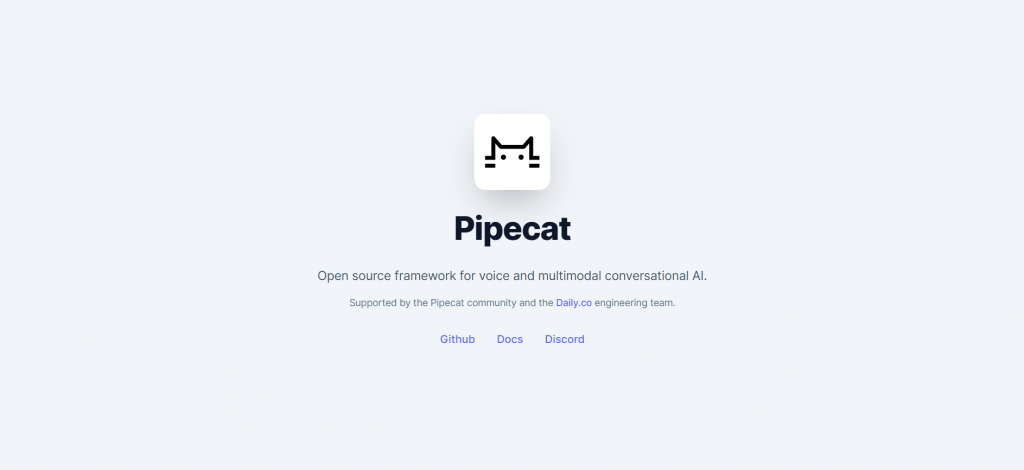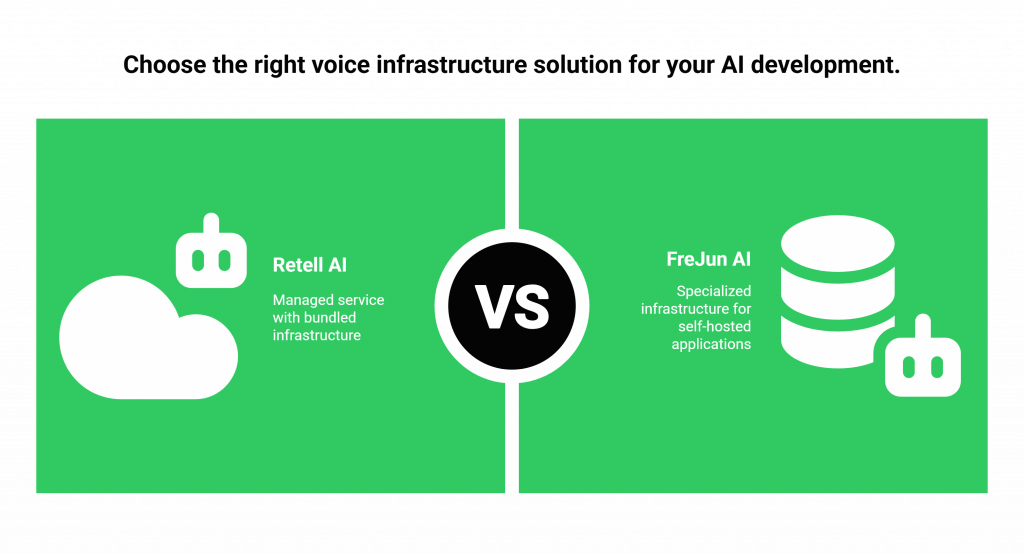For a developer building a voice AI agent, the ultimate challenge is making the conversation feel real. This means it must be incredibly fast, with no awkward delays. This singular focus on speed and responsiveness has created a fascinating fork in the road for development tools.
Do you choose a managed service that handles all the complex infrastructure for you, or an open-source framework that gives you absolute control over every millisecond? This is the core of the Retell AI vs Pipecat AI debate.
Choosing the wrong tool can lead to significant roadblocks. A managed service might be fast to set up but could limit your ability to customize the agent’s behavior. An open-source framework offers infinite flexibility but requires you to manage the underlying infrastructure.
This decision between convenience and control is a critical one. This article will provide a deep, developer-focused comparison of Retell AI vs Pipecat AI, helping you determine which path is the right one for your next voice AI project.
Table of contents
Understanding Retell AI & Pipecat AI
At their heart, Retell AI and Pipecat AI are both designed to help you build low-latency voice agents. However, they are built on opposite philosophies about how to achieve that goal.
What is Retell AI? The Managed Service for Speed
Retell AI is a developer-first platform that provides a managed API and SDKs to build voice agents with extremely low latency. Think of it as the “buy” option. Retell has built a complex, proprietary infrastructure designed to handle all the hard parts of real-time voice conversations, like telephony, audio streaming, and managing the AI service pipeline, and exposes it all through a simple, clean API.

For Developers, Retell AI’s Main Advantages Are
- Speed to Market: You can go from an idea to a live, production-ready voice agent in an incredibly short amount of time.
- Managed Infrastructure: You never have to worry about servers, scaling, or telephony connections. Retell handles it all.
- Focus on Simplicity: The API and SDKs are designed to be as simple as possible, abstracting away the underlying complexity.
Developers choose Retell AI when their primary goal is to launch a high-performance voice agent as quickly and easily as possible.
What is Pipecat AI? The Open-Source Framework for Control
Pipecat AI is a powerful, open-source Python framework for building real-time, conversational voice AI. Think of it as the “build” option. Pipecat gives you the complete toolkit to construct your own voice AI pipeline from the ground up. It does not provide a managed service; instead, it provides the code and structure you need to run your own service, giving you granular control over every single component.

For Developers, Pipecat AI’s Main Advantages Are
- Ultimate Control and Customization: You can modify any part of the framework, integrate any custom STT or TTS model, and define the agent’s logic with complete freedom.
- No Vendor Lock-in: Being open-source, you are never tied to a single company’s ecosystem. You own and control your entire application stack.
- Full Transparency: You can see exactly how everything works under the hood, making it ideal for complex debugging and optimization.
Developers choose Pipecat AI when they need deep customization, want to avoid vendor lock-in, or need to self-host their application for security or data residency reasons.
Also Read: Why Developers Choose VoIP Calling API Integration for OpenAgents?
Retell AI vs Pipecat AI: A Developer-Focused Comparison
To make the right choice, it is essential to see how these two platforms stack up on the issues that matter most to developers. The Retell AI vs Pipecat AI decision is a classic trade-off.
| Feature | Retell AI | Pipecat AI |
| Primary Offering | Managed API & SDKs | Open-Source Python Framework |
| Hosting Model | Fully managed by Retell | Self-hosted by the developer (e.g., on AWS, GCP) |
| Control vs. Convenience | High convenience, less granular control | Ultimate control, more setup and management |
| Customization | Limited to what the API exposes | Infinitely customizable at the code level |
| Ease of Setup | Extremely fast; “Time to First Call” is minutes | More involved; requires Python environment and infra setup |
| Cost Model | Usage-based pricing (per minute) | Framework is free; you pay for your own cloud infra and API services |
Why Do You Need FreJunAI?

When evaluating the Retell AI vs Pipecat AI landscape, it’s crucial to see the foundational layer they both rely on: voice and telephony infrastructure. Retell bundles this as part of its managed service. If you build with Pipecat, you need to provide it yourself. This is exactly where FreJun AI comes in.
We provide the specialized voice infrastructure, the real-time call streaming and telephony that connects your AI to the telephone network. Our philosophy is, “We handle the complex voice infrastructure so you can focus on building your AI.”
For a developer using Pipecat, FreJun AI is the perfect partner, providing the enterprise-grade “plumbing” for your self-hosted application.
Also Read: How Does VoIP Calling API Integration for LlamaIndex Help Developers?
Making the Right Choice: Real-World Use Cases
The best way to decide between these platforms is to consider your project’s specific goals and constraints.
When to Choose Retell AI
You should choose Retell AI when speed to market and operational simplicity are your top priorities.
- Scenario: A startup launching a Minimum Viable Product (MVP) for an AI sales agent, or a company that wants to add a voice feature without hiring a dedicated infrastructure team.
- Reasoning: Retell’s managed platform eliminates the need to worry about servers, scaling, or telephony. The fast setup allows you to test your idea with real users in days, not weeks.
When to Choose Pipecat AI
You should choose Pipecat AI when you need deep customization, full ownership of your stack, or have unique technical requirements.
- Scenario: A large enterprise with strict data security policies that require self-hosting, or a company building a highly specialized agent that needs to integrate with custom, in-house AI models.
- Reasoning: Pipecat’s open-source nature provides the flexibility to meet these complex needs. You have full control over the code and the data, which is essential for certain industries and advanced use cases.
Conclusion
In the end, there is no single “best” tool in the Retell AI vs Pipecat AI matchup. The right choice depends on your priorities as a developer and the needs of your project. It is a classic engineering trade-off between a managed service that offers convenience and speed, and an open-source framework that offers ultimate control and flexibility.
Choose Retell AI if you want to build and deploy a high-performance voice agent as fast as possible, without the headache of managing infrastructure.
Choose Pipecat AI if you need to build a highly customized voice agent, want to own your entire technology stack, and are comfortable managing the underlying infrastructure.
By clearly understanding this fundamental difference, you can confidently select the platform that will best empower you to build a truly next-generation voice AI experience.
Also Read: What Are SIP Trunks? (And How They Differ From Traditional Phone Lines)
Frequently Asked Questions (FAQs)
The main difference is their delivery model. Retell AI is a managed, API-first service (a “buy” solution) that handles all the infrastructure for you. Pipecat AI is an open-source Python framework (a “build” solution) that you use to build and host your own voice AI application
Yes. Because Pipecat is a framework and not a service, you are responsible for deploying and running your application on your own infrastructure, such as a cloud provider like AWS, Google Cloud, or Azure
Both platforms are LLM-agnostic, meaning you can connect them to any language model. For custom Speech-to-Text (STT) or Text-to-Speech (TTS) models, Pipecat AI offers far greater flexibility, as you can write the integration code directly into the framework.
FreJun AI provides the foundational telephony and real-time audio streaming layer. While Retell AI bundles this, a developer using the Pipecat framework would need a service like FreJun AI to connect their self-hosted application to global telephone network reliably and with low latency
